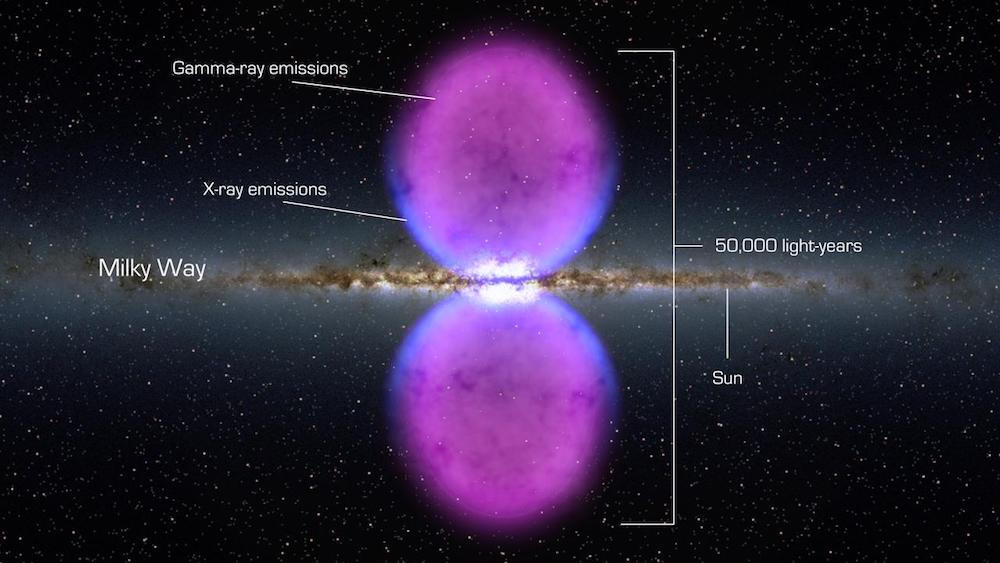According to most sources of information I have found (A Quora answer and books), when galaxies become quasars, they destroy all life in their host galaxy, as they output so much radiation that they can disintegrate DNA and do lots of bad stuff, like destroying the ozone layer.
But according to some information I have found, such as this site, The Milky Way itself was a quasar or atleast, an active galaxy 6,000,000 years ago, when massive gas streams were blasted from Sagittarius A*, the Milky Way's supermassive black hole. This explains the enormous Fermi Bubbles found lingering above our galaxy, and the abnormal amount of gamma rays being found in that region. Quasars are known to be so powerful that they make GRBs seem like a insignificant firework.
The proof that the Milky Way was a quasar is the Fermi Bubbles, giant bubbles of gas found lingering over our galaxy. According to studies, the Fermi Bubbles emit a unusually high amount of gamma rays. This is way too much radiation to be produced by dark-matter annihilation. Studies suggest that the reason for the Fermi Bubbles being so radioactive and energetic is due to the fact that the Fermi Bubbles may have been the remnants of a quasar event, when too much gas fell into Sgr A* and was blasted out in jets, which formed the Fermi Bubbles. This also explains the reason why they are emitting so much gamma rays, due to the rapid ionization of so much gas by this quasar event. According to this Iopscience source, temperatures in the Fermi Bubbles may range from $10^6K$ to $10^8K$. Also, it has been shown that the "cool" gas in Northern Fermi Bubbles, have been clocked at $2⋅10^6K$. This may have been a spectacular sight in the prehistoric night sky, but terrible news for life, due to intense irradiation of hard gamma-rays and X-rays.  .
.
But at that time, the Earth already had advanced life on it, and even apes were present at the time. If the Milky Way was a quasar, then it should have outputted so much radiation into the environment that it would have destroyed the ozone layer. Also, the radiation would have sterilized the planet to a lifeless rock, and it would have taken several millions, or even billions of years for Earth to recover from such a mass extinction. And yet, everything on Earth seems normal. The ozone layer is intact, humans haven't mutated into horrendous creatures, nor is our planet fried to a crisp. Nothing is out of place.
I cannot get my head around this, quasars are supposed to destroy all life in the host galaxy, and not spare life. It should have turned Earth into a barren wasteland and destroy even the hardiest microbes, and destroy the ozone layer, even stripping the Earth of its own atmosphere, if it was powerful enough.
How could have life survived on Earth, when the Milky Way was a quasar 6 million years ago?